35 mm Oerlikon Contraves AHEAD programmable shells
Promising solutions
Oerlikon-Contraves has for a long time been developing artillery systems for various purposes. In recent decades, new requirements for guns have appeared, and the Swiss company has responded to them by developing promising projects.
Back in the nineties, work began on the subject of programmable munitions ammunition. In the next decade, new products went to landfills and exhibitions. The ammunition family has received the designation AHEAD (Advanced Hit Efficiency And Destruction - "Increased efficiency of penetration and defeat"). To date, such products managed to enter the arsenal of a number of countries.
The AHEAD project proposed to increase the efficiency of shooting through the use of a whole artillery complex. It included the actual projectile with special capabilities, a modified gun with the necessary devices and fire control devices. Subsequently, the LMS and equipment for the guns was adapted for the possibility of mounting on different artillery systems, including different calibers.
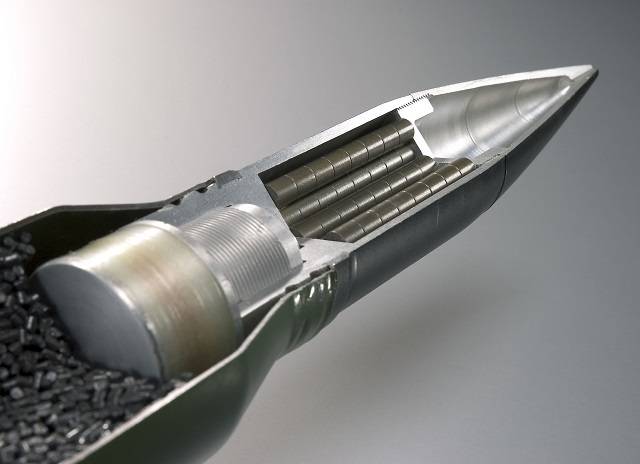
View from a different angle - in the foreground a fuse. Photo Oerlikon Contraves / rheinmetall-defence.com
Such a modular approach provided the AHEAD complex with well-known advantages. An artillery system of this kind can be built on the basis of different guns of all compatible calibers and used on different media. AHEAD shells have already been successfully implemented on a mass of land systems, including on military vehicles, as well as on ships.
Gun devices
To use AHEAD ammunition, the gun must be supplemented with several special instruments. The most noticeable of them is the muzzle device-programmer. It is a muzzle brake, complemented by a large cylindrical block with electronic equipment. Installation of the device is carried out directly on the muzzle of the barrel; the cable is connected to the OMS.
Inside the durable casing, in its rear and middle parts, there are two induction coils necessary for measuring the initial velocity of the projectile. In front of them is a larger coil of the programmer. These devices are used sequentially and solve different problems.
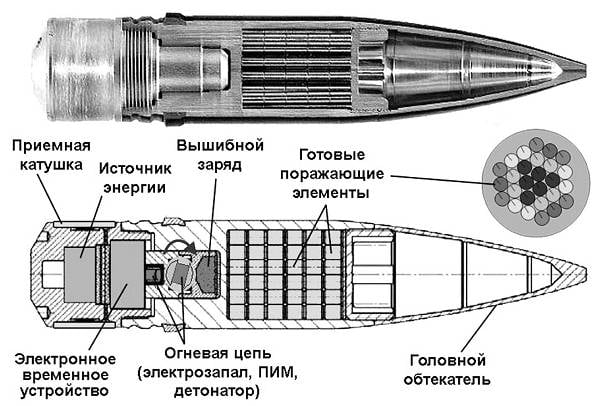
AHEAD shell layout. Figure Btvt.narod.ru
At the time of the shot, the projectile sequentially passes through two coils of the speed meter. The MSA determines the velocity of the projectile, makes corrections to the data for firing, and provides the necessary signal to the coil-programmer. She enters data into a special projectile fuse.
Programmable shells
The AHEAD ammunition family is built around common ideas and some unified components. Combining the latter with the necessary devices and products, you can create an artillery shot of the required appearance. Thanks to this, three types of shots for 35-mm guns have already been developed. It is also possible to create similar products in caliber 30 and 40 mm.
AHEAD shells of all types have a similar architecture. The conical fairing is screwed onto a cylindrical housing accommodating military equipment. A programmable fuse is located in the tail housing of the housing. The entire assembly is placed in the barrel of the cartridge case. The design and dimensions of the hull elements, as well as the combat load, depend on the caliber and type of shot. All versions use a standardized fuse.
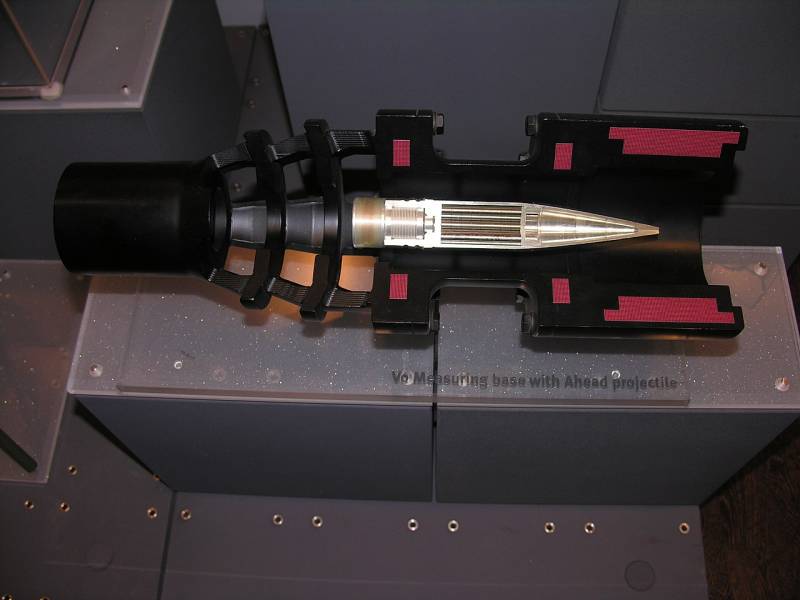
Cut-out mock-up of a muzzle device and projectile. Coils are marked in red. Wikimedia Commons Photos
A receiving coil and a special energy source that is triggered by a shock during firing are placed in the fuse case. Next to them is a programmable temporary device that receives data from the programmer and determines the duration of the flight. After a predetermined time, this device activates an electric fuse and undermines the charge of the projectile. AHEAD fuse works only at the set time - there is no contact mode.
For the safety of gunners, the AHEAD product has two levels of protection. The first is performed mechanically: before the movement along the barrel, the fuse contacts are open, and it remains inoperative. The electronic fuse does not allow you to set a flight time of less than 64 ms, which corresponds to the range of 60-70 m. If the data is entered incorrectly after 8 seconds after the shot, the self-destroyer is activated.
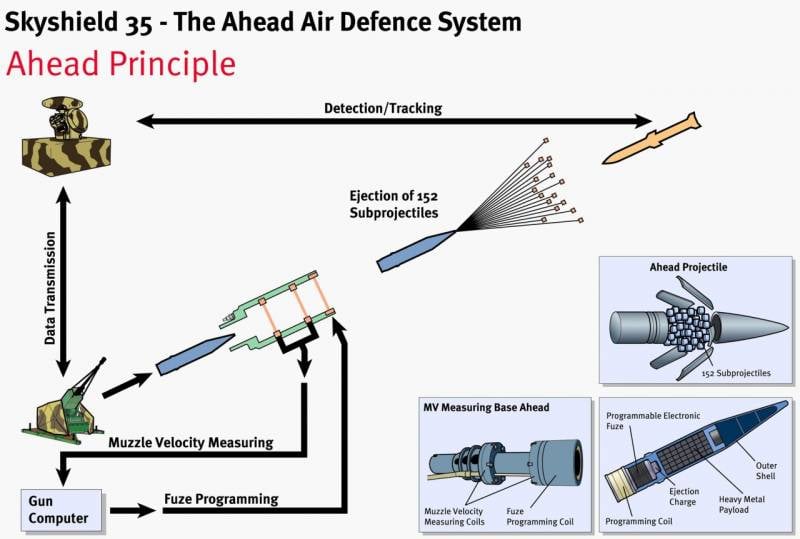
The principle of operation of the air defense system using the AHEAD projectile. Figure Oerlikon Contraves / rheinmetall-defence.com
An interesting feature of AHEAD is the minimum necessary military equipment. All shells of this type have a separable housing containing ready-made striking elements. Due to this, it was possible to minimize the bursting charge, ensuring the dispersion of the GGE.
Three ammunition
The possibility of detonation at a given point on the trajectory gives shells known advantages. They can be used to more effectively hit ground or surface targets. Also increases the efficiency of firing at air targets. For use on different artillery systems for various purposes, they initially created three types of 35X228 mm rounds with shells of the AHEAD family.
The first sample of the family is designated as PMD062. It has dimensions at the level of "ordinary" ammunition of the same caliber and weighs 750 g. The central part of the hull has separable walls. When the fuse is triggered, it opens into six "petals" that provide the output of the GGE. The projectile holds 152 cylindrical GGEs laid in 8 longitudinal columns of 19 pieces each. The total mass of the elements is 500 g. The opening of the body and the release of the GGE are carried out due to the explosive charge weighing only 0,9 g.
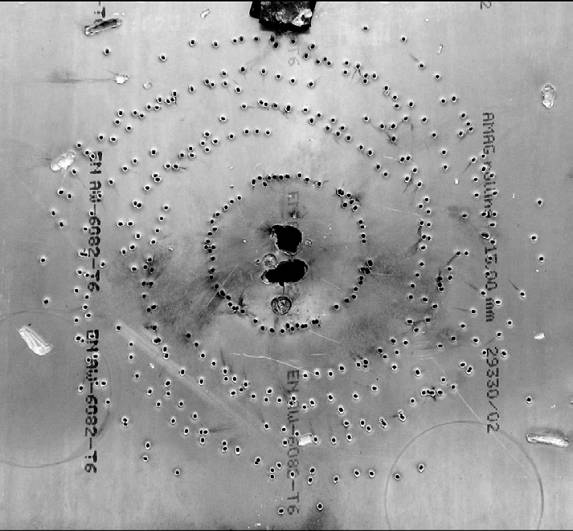
15 mm thick aluminum sheet after shelling with PMD330 shell. Photo Btvt.narod.ru
The PMD330 projectile has a similar design, but it uses a different set of GGEs. In its central compartment, 407 striking elements are placed - 11 columns of 37 units each. The weight of the HPE has been reduced to 1,24 g.
The course to reduce GGE continued in the PMD375 project. This projectile is equipped with an 860 GGE of 0,64 g weight and has the same detonation controls and charge for ejection.
The normal muzzle velocity for AHEAD shells is 1050 m / s. The muzzle device and the OMS automatically measure the real value of this parameter and make corrections to the input data. After fuse triggering, the GGEs fly apart in the front conical sector up to 15 ° wide. A projectile with a sharp fairing can also cause some damage to the target.
The heaviest GGE projectile PMD062 can effectively hit lightly armored and unprotected vehicles, aircraft and aviation means of destruction. Lightweight GGEs from PMD330 are designed to combat manpower and unprotected equipment. The PMD375 projectile is designed to destroy small-sized air targets, including UAV.
Feature of application
AHEAD shells are suggested for use in different situations and against different purposes. In all cases, the defeat is provided by a cloud of high-speed HPE with a high breakdown effect. The ability to select a detonation point gives the artillery system operator special capabilities.
The easiest way to use AHEAD is to shoot at a certain distance in front of the target. In this case, the target falls into the cone of the expansion of the GGE and receives maximum damage. Blasting multiple shells at one point can enhance the impact or likelihood of damage. This method of application is suitable for the destruction of ground and air targets.
A shooting technique called “Pearl String” is proposed. In this case, several shots are fired with the installation of fuses at different ranges. Shells are detonated almost simultaneously and form a kind of "thread". This can be used if it is impossible to measure the exact distance to the target, to hit the columns on the track or trenches when firing from the flank.
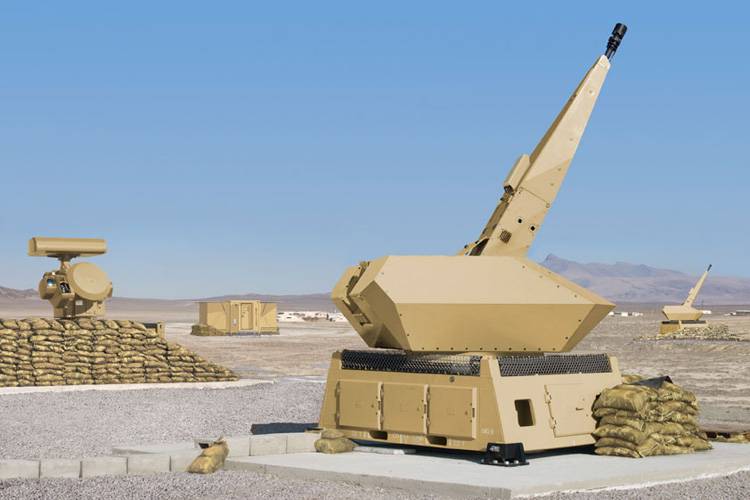
Oerlikon Skyshield air defense system, built on the basis of 35-mm guns and capable of using AHEAD shells. Figure Oerlikon Contraves / rheinmetall-defence.com
If necessary, AHEAD shells can be used not only as fragmentation, but also as kinetic. The design of the ammunition allows punching brick and concrete walls, as well as metal, including armored barriers. For such a projectile use, it is sufficient not to program the fuse.
Wide use
The AHEAD projectile family was created under the 35-mm guns of the Oerlikon brand and their derivatives. Together with new features, this fact had a positive effect on the commercial prospects of the development. New types of shells entered service with several states. They are used with air defense artillery, as well as in the armament of armored combat vehicles and ships.
Based on the 35 mm AHEAD shells, new ammunition has been developed. First of all, unified shells appeared in the caliber 30 and 40 mm. Some of them have already found application in real projects of armored vehicles. It also offers integration of a programmable fuse into the design of the 40-mm shot for an automatic grenade launcher.
The Oerlikon Contraves AHEAD product line was one of the first of its kind, which allowed them to gain a foothold in the market. Even with foreign competitors, such ammunition retains its position and is not yet ready to give in to anyone. Moreover, the development company is doing everything possible to expand the range of shots to the wishes of various customers. It is likely that in the near future the basic 35-mm AHEAD products will become the basis for new types of artillery shots.
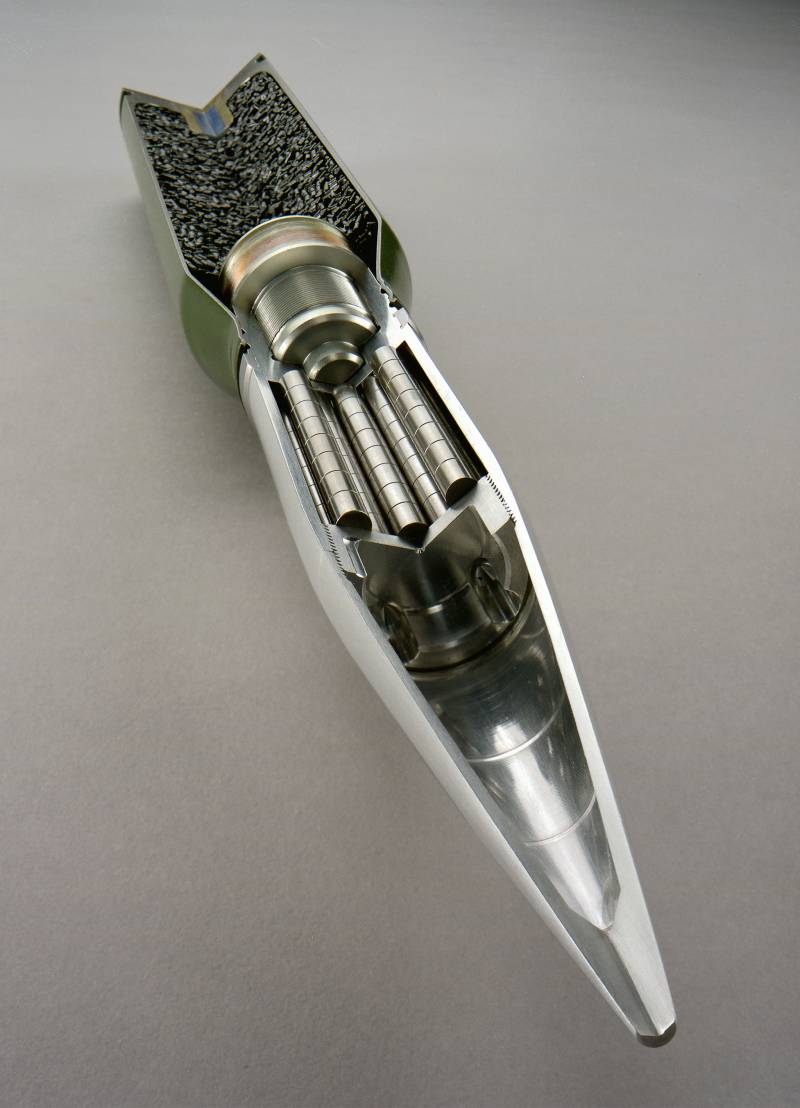
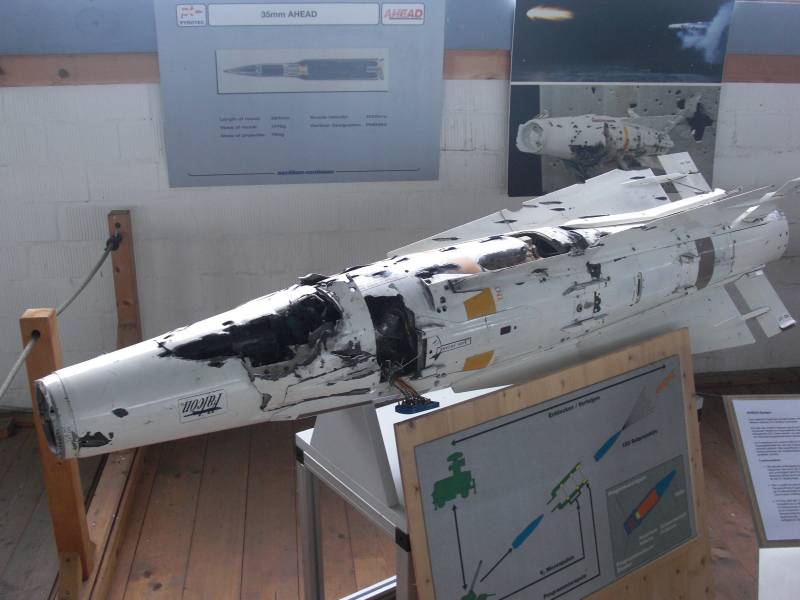
Information